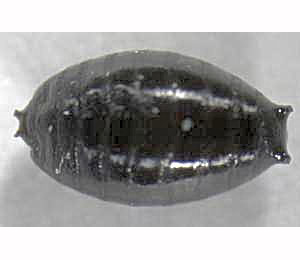|
||||||
|
MYRRHIS. Sweet cicely. [Apiaceae] |
|
Only one species of Myrrhis is recorded in Britain, Sweet Cicely (M. odorata). It is introduced. Only one British miner is recorded on Myrrhis. A key to the European miners recorded on Myrrhis is provided in Bladmineerders van Europa. |
Key for the identification of the known mines of British |
1 > Leaf-miner: A short, narrow, linear mine, generally closely following margin of leaf segment; in very small sections of a leaf producing a secondary blotch (Spencer, 1972b: 89 (fig. 302), 92; Spencer, 1976: 401 (fig. 702), 402). Upper-surface corridor, in the end widening so strongly that within the limited space of an umbelliferous leaf often a secondary blotch is the result. The upper-surface mine is preceded by a short lower-surface corridor, made by the first instar larva during the first part of this stage (Allen, 1956a). It is difficult to observe, also because it tends to follow the leaf margin. Frass in two untidy rows of isolated grains. Before pupation the larva leaves the mine through a semicircular exit slit in the lower epidermis. A narrow mine, follows leaf marginand forms secondary blotches. |
 Phytomyza chaerophylli puparium Image: © Willem Ellis (Bladmineerders van Europa) |
|
Phytomyza chaerophylli Kaltenbach, 1856 [Diptera: Agromyzidae]. |
| Last updated 06-Jul-2019 Brian Pitkin | ||
